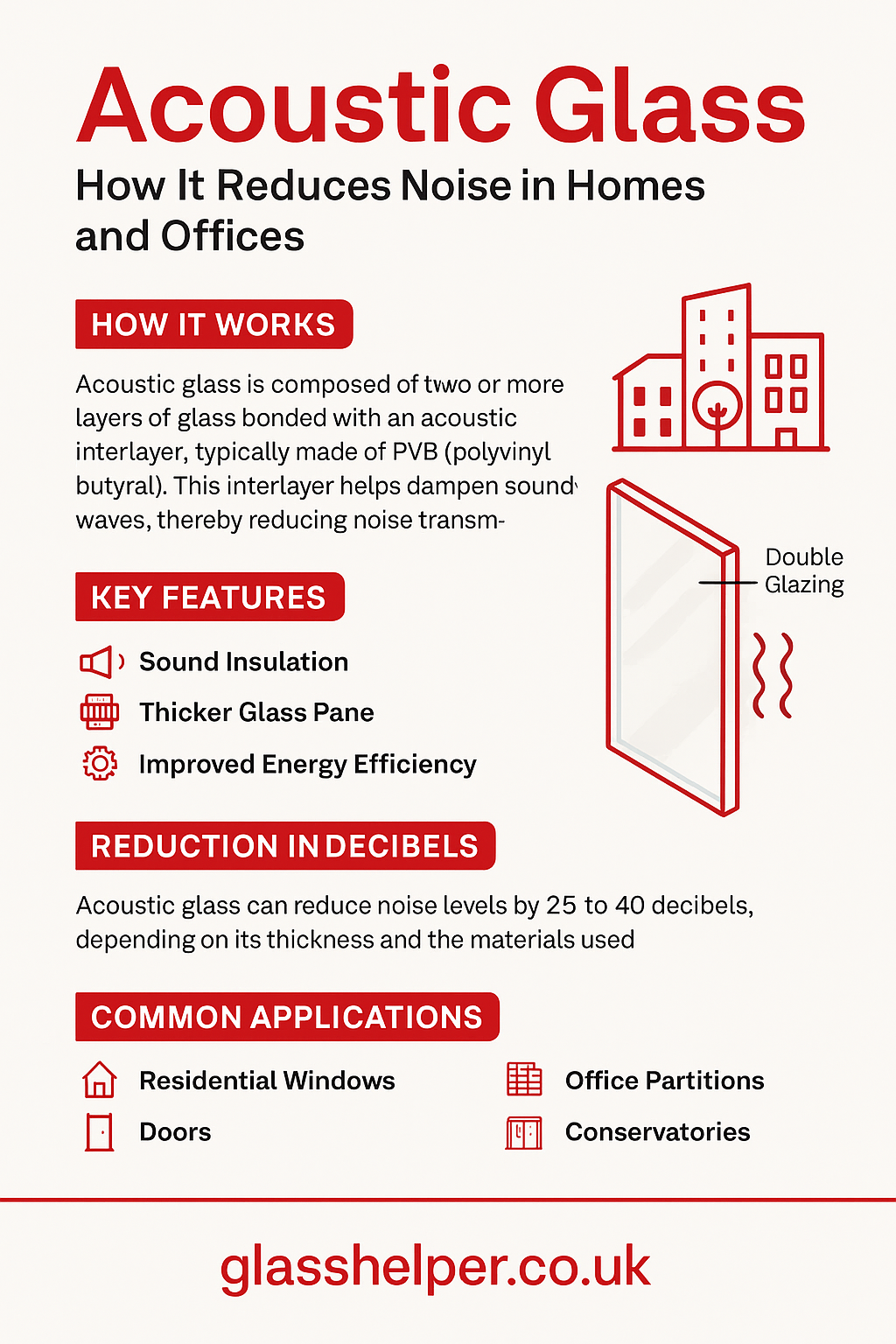Acoustic Glass – How It Reduces Noise in Homes and Offices
Quiet Comfort · 2025
Read time: ~6 mins · Updated: 28 Sep 2025
Acoustic glass is a powerful way to reduce unwanted noise, improve comfort and wellbeing at home or in the office.
Whether it’s traffic, neighbours, or internal sound, acoustic-rated glass offers measurable sound reduction.
This article explains how it works, where to use it, and what to consider when choosing acoustic glass.

How acoustic glass works
Acoustic glass typically consists of two or more layers of glass with a special interlayer, often PVB (Polyvinyl Butyral) or other acoustic PVB, sandwiched between. This interlayer dampens vibration from sound waves, reducing how much of the noise passes through.
- Multi-layer laminated glass construction with acoustic interlayers.
- Different thickness combinations and interlayer types give different sound reduction ratings (Rw dB).
- Seal quality, frame type, and installation strongly affect overall noise reduction.
Key benefits
- Reduces traffic, airport, or street noise entering living spaces.
- Improved privacy in office partitions or conference rooms.
- Better sleep quality with quieter bedrooms.
- Enhanced concentration and productivity in workspaces.
Where to use acoustic glass
- Homes near busy roads or noisy external environments.
- Offices and meeting rooms where speech privacy is needed.
- Schools, hospitals or public buildings needing quiet zones.
- Bedrooms, shared walls, media rooms, or nurseries.
What to check before purchase
- Look for an acoustic rating (Rw or STC) to understand how many decibels reduction you get.
- Check interlayer type and thickness—different interlayers perform differently.
- Ensure the glass is properly sealed in the frame; gaps or poor seals reduce effectiveness.
- Consider toughened or laminated safety glass if safety or code regulations apply.
For high quality acoustic glass, see tempered glass options for safety-certified panels.
References & further reading:
Pilkington Acoustic Glass Technical,
Glass & Glazing Federation sound insulation guidelines,
UK Building Regulations Approved Document E
Looking to reduce noise in your space?
Explore Acoustic Glass Products
Frequently asked questions
What is the typical decibel reduction I can expect?
Good quality acoustic glass can reduce external noise by approximately **30-50 dB** depending on thickness, interlayer quality, sealing, and frame type.
Does laminated glass always reduce noise?
Yes—but the degree depends on interlayer thickness/quality. Acoustic PVB interlayers are specifically designed to damp sound better than standard ones.
Is acoustic glass more expensive?
Typically yes—due to extra interlayer, lamination, better sealing and thicker glass. But the benefits in comfort often outweigh the costs in noisy environments.
Can standard glass provide any noise reduction?
Standard clear glass provides minimal noise insulation. Multiple panes, double-glazing and acoustic interlayers are far more effective.
